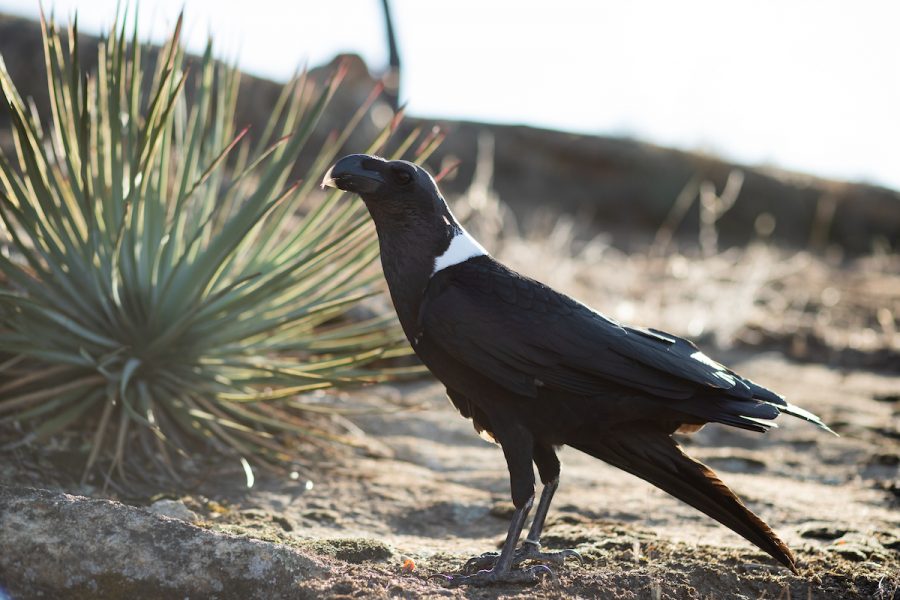Raven Family


Corvus albicollis
POPULATION STATUS
Least Concern
BODY LENGTH
Up to 21.3 inches
WINGSPAN
Up to 33.9 inches
WEIGHT
1.7 – 1.9 lbs
Who They Are
White-necked ravens:
- Linus: hatched in 2009
- Forrest: hatched in 2016
- Zisou: Black-throated magpie jay (Calocitta colliei)
Where They Originate
White-necked ravens are found in eastern and southern Africa in open and mountainous habitat
Their Role at Avian Behavior International
Ravens belong to the family known as Corvids, which include jays, crows, and magpies. These are incredibly intelligent birds. White-necked ravens Linus and Forrest both demonstrate through a variety of behaviors how they interact with the world, even exploiting human activities and resources to their advantage.
Linus also suffered from lead poisoning due to tainted meat unknowingly fed to him at a different facility. His survival and handicap helps us talk about the dangers of lead use in bullets, fishing tackle, and other items that are disposed where wildlife comes into contact with this dangerous metal
Zisou engages guests on tours and helps people understand how the corvid family works.
How You Can Meet Them
You can get a truly special experience interacting with our White-necked ravens in our Exotic Bird Meet and Greet Experience, Ultimate Bird of Prey Experience, Elite Bird Experience, and Animal Trainer for a Day.
Forrest is also a pro in our free flight programs, and you can book an educational program for your event, school, museum, or library programs.
Zisou is one of the first birds to greet people on tours and is often part of our Exotic Bird Meet and Greet tours as well as our outreach programs.
Likes and Dislikes
Likes: Mimicking trainers’ voices
Dislikes: Linus has a hatred for steamed sweet potatoes. Forrest dislikes casual training sessions, he is always looking for a job to do
What You Might Not Know About These Birds
Ravens, like all corvids, are a member of the songbird family.
Ravens can learn to mimic voices and whistles, which can be a little disarming. Our White-necked ravens can speak the same words in a variety of voices, so you never know who is actually talking!
Ravens can exploit the environment by watching humans. Biologists have to be careful when doing nesting surveys if a raven family is around. They can endanger ground nesting birds by leading ravens straight to the nest.

